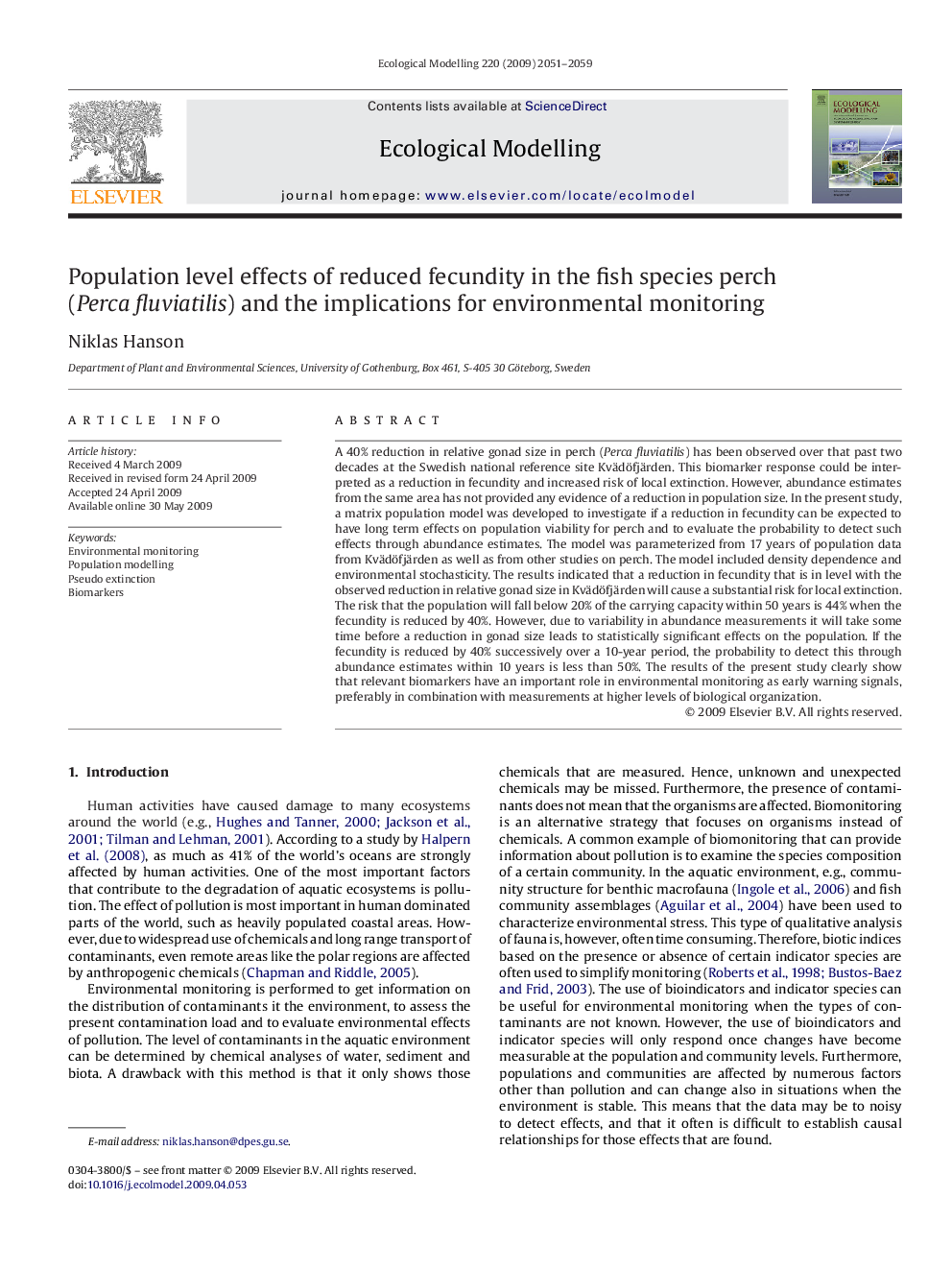| Article ID | Journal | Published Year | Pages | File Type |
|---|---|---|---|---|
| 4377765 | Ecological Modelling | 2009 | 9 Pages |
Abstract
A 40% reduction in relative gonad size in perch (Perca fluviatilis) has been observed over that past two decades at the Swedish national reference site Kvädöfjärden. This biomarker response could be interpreted as a reduction in fecundity and increased risk of local extinction. However, abundance estimates from the same area has not provided any evidence of a reduction in population size. In the present study, a matrix population model was developed to investigate if a reduction in fecundity can be expected to have long term effects on population viability for perch and to evaluate the probability to detect such effects through abundance estimates. The model was parameterized from 17 years of population data from Kvädöfjärden as well as from other studies on perch. The model included density dependence and environmental stochasticity. The results indicated that a reduction in fecundity that is in level with the observed reduction in relative gonad size in Kvädöfjärden will cause a substantial risk for local extinction. The risk that the population will fall below 20% of the carrying capacity within 50 years is 44% when the fecundity is reduced by 40%. However, due to variability in abundance measurements it will take some time before a reduction in gonad size leads to statistically significant effects on the population. If the fecundity is reduced by 40% successively over a 10-year period, the probability to detect this through abundance estimates within 10 years is less than 50%. The results of the present study clearly show that relevant biomarkers have an important role in environmental monitoring as early warning signals, preferably in combination with measurements at higher levels of biological organization.
Related Topics
Life Sciences
Agricultural and Biological Sciences
Ecology, Evolution, Behavior and Systematics
Authors
Niklas Hanson,
